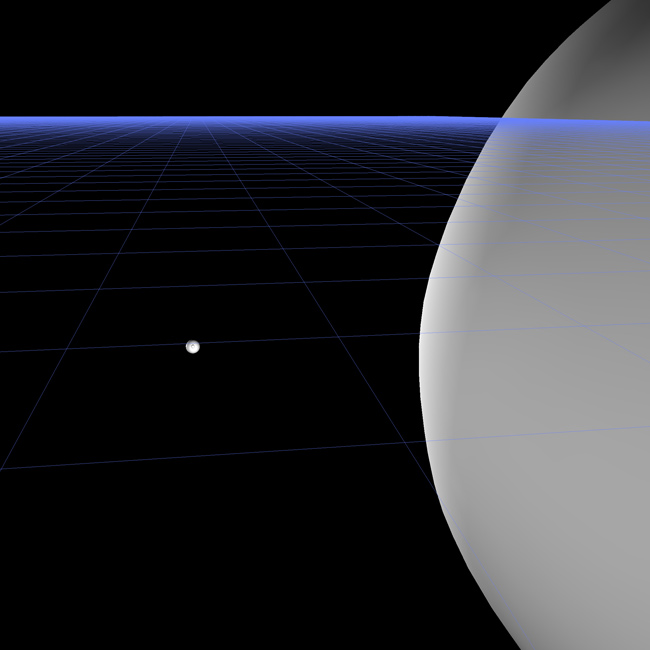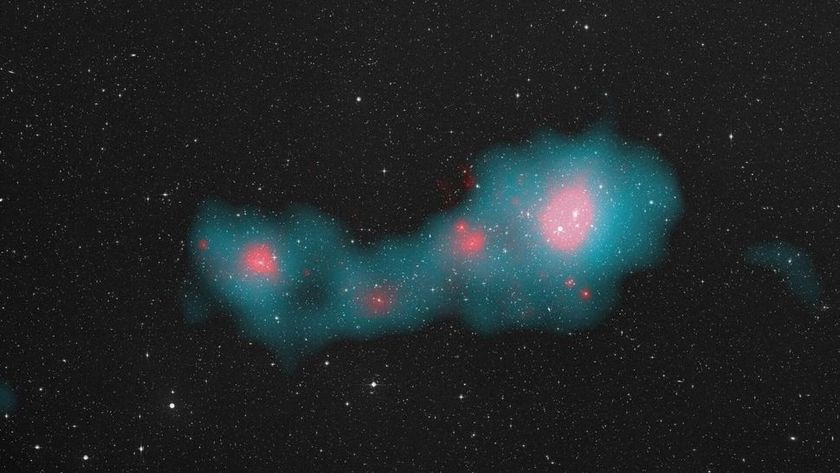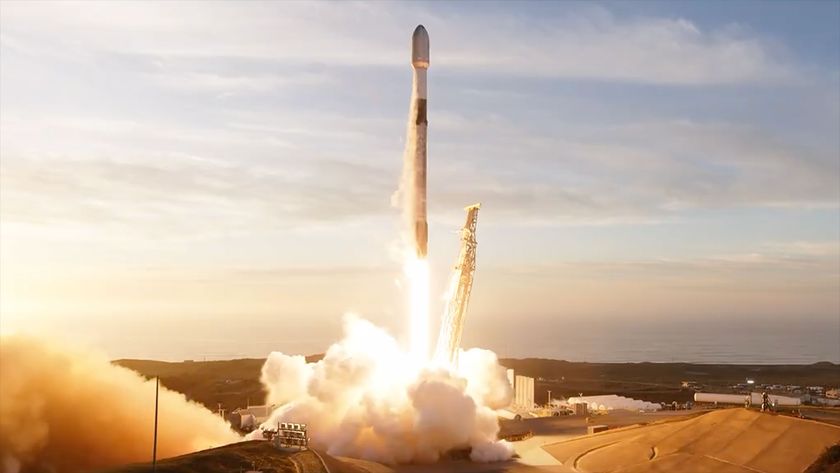Giant Black Hole Swallows Smaller One in Breakthrough Simulation

Call it a cosmic revision of Davidand Goliath: Scientistshave simulated the showdown between a small black hole and a giantblack hole. Butunlike in the Biblical tale, the Goliath wins out.
Black holes are such mind-bendingobjects, the best that astronomerscan do to see how these unexplored phenomena work is to simulate themwith supercomputers.The new simulation, made possible through an advance in programming andmonthsof computation, paired one black hole (the David) with one about 100times as massive ? a situation that researchers suspectclosely mirrorswhat happens often in our universe.
"Nature doesn?t collideblack holes of equal masses," said Carlos Lousto, associateprofessorof mathematical sciences at Rochester Institute of Technology and amember ofthe school's Center for Computational Relativity and Gravitation, in astatement."They have mass ratios of 1:3, 1:10, 1:100 or even 1:1 million. Thisputsus in a better situation for simulating realistic astrophysicalscenarios andfor predicting what observers should see and for telling them what tolook for."
The simulation showed the giant blackhole moving toward therunt and eventually consuming it. [Gallery:Black Holes of the Universe]
Until now, simulating the merger oftwo black holes with amass ratio of 1:100 was thought to be impossible, requiring too muchcomputing power,the researchers said. But Lousto and his RIT colleague Yosef Zlochowermadeadvances in the ability of computers to model the physics theory ofgeneralrelativity.
Even so, it took a supercomputerwith 70,000 processors nearly three months to complete the complexsimulation.That supercomputer, called the Ranger, is located at the Texas AdvancedComputer Center at the University of Texas at Austin.
"Their work is pushing the limit ofwhat we can dotoday," said Manuela Campanelli, director of the Center forComputationalRelativity and Gravitation, who helped develop a computer techniquethat led toone of the first simulations of black holes on supercomputers in 2005."Now we have the tools to deal with a new system."
Get the Space.com Newsletter
Breaking space news, the latest updates on rocket launches, skywatching events and more!
The researchers plan to apply theirnew simulation processesto scenarios involving a pair of black holes with smaller mass ratios,and spinningbinary black holes. They also hope the new model will aid inastronomers'attempts to observe black hole mergers using instruments such as theAdvancedLIGO (Laser Interferometer Gravitational-Wave Observatory) and thespace probeLISA (Laser Interferometer Space Antenna).
Lousto and Zlochower have submitted apaper to the journal PhysicalReview Letters describing their results.
- Gallery:Black Holes of the Universe
- 9Super-Cool Uses for Supercomputers
- VideoShow? The Black Hole That Made You Possible
Join our Space Forums to keep talking space on the latest missions, night sky and more! And if you have a news tip, correction or comment, let us know at: community@space.com.

Space.com is the premier source of space exploration, innovation and astronomy news, chronicling (and celebrating) humanity's ongoing expansion across the final frontier. Originally founded in 1999, Space.com is, and always has been, the passion of writers and editors who are space fans and also trained journalists. Our current news team consists of Editor-in-Chief Tariq Malik; Editor Hanneke Weitering, Senior Space Writer Mike Wall; Senior Writer Meghan Bartels; Senior Writer Chelsea Gohd, Senior Writer Tereza Pultarova and Staff Writer Alexander Cox, focusing on e-commerce. Senior Producer Steve Spaleta oversees our space videos, with Diana Whitcroft as our Social Media Editor.
Most Popular




